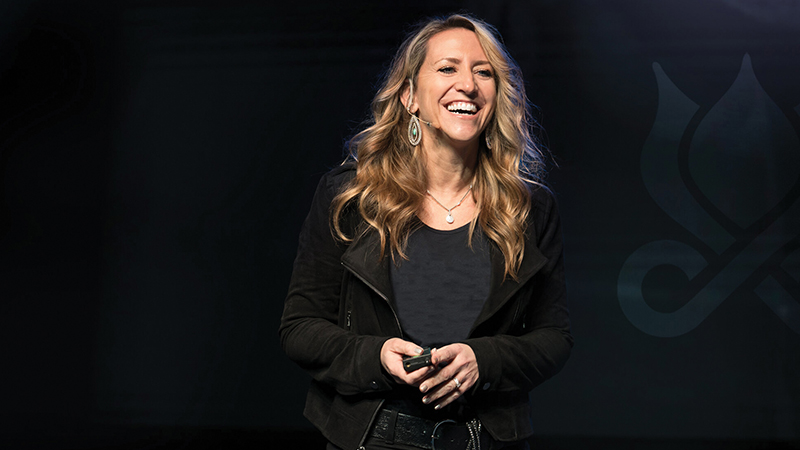Mindful Technology: A New Approach in a New Normal
In an increasingly digital world, approaching technology with mindfulness is key to
both mental health and business success.
By Hilary Collins | Fall 2020

You wake up in the morning to your phone alarm, sign into your
work laptop, Zoom with coworkers, FaceTime with friends, grocery
shop online, stream movies online, and look up recipes online.
COVID-19 has only accelerated digitization and the use of technology
in every facet of our lives. Instead of going to Blockbuster, browsing
a bookstore, filling a physical shopping cart, or sitting in a small
meeting room with clients, we’re interacting with technology.
That’s why choosing the technology we use and evaluating how we
interact with it is so important. Amy Vetter, CPA.CITP, CGMA, MBA,
has combined her expertise in technological innovation and yogic
practices to champion a balanced and intentional approach to our
online lives that she calls mindful technology.
“During COVID-19, we saw many companies going remote in the
blink of an eye, and many had no choice but to make knee-jerk
decisions to keep the lights on,” Vetter says. “They implemented
technology that would allow them to do the work remotely but didn’t
have the time to do so thoughtfully.”
So now what? Vetter says now is the perfect time to step back and
reassess what we want from technology.
“The mindful piece of this is that we need to balance the need for
human connection and a positive human experience with efficiency,
ROI, and all the practical things we’re looking for from technology,”
Vetter explains.
The truth is that the tactile experience of working with a technology
is a very important part of the overall effectiveness of that technology.
Some technologies may do what they were designed to do while
also creating more stress and less fulfilment, which in the long run
can lead to employee burnout, client frustration, and underutilization
of the technological tools a business is paying for.
Organizations who want to embrace mindful technology can start by
building a team to evaluate the technology the organization is using.
Vetter stresses the importance of listening to all voices and not just
the ones that are happy with the current system.
“Technology has really changed over the past 20 years—20 years
ago you would find a software package, implement it, and
walk away,” Vetter notes. “Today, you should focus on continual
improvement and fine-tuning. If you can make it 10 percent better,
that’s great.”
While embracing mindful technology as an organization is an
ongoing challenge, individual team members can start immediately
by setting healthy boundaries.
“In a remote world, it’s important to make room for the things that
matter and that rejuvenate us,” Vetter emphasizes. “We should be
thinking through our day and putting guardrails around our time and
having the confidence to take time for priorities. One complaint I hear
is, ‘People put meetings on my calendar even when I have time
blocked,’ but the truth is, we each have control to decide whether
we accept a meeting.”
As technology becomes an integral part of our lives, approaching
our digital lives with mindfulness and care should be important to us
as individuals and as organizations.
“When we put technology in place mindfully, we should see time
freed up so we can focus more on our clients, team members, and
creating better human connections,” Vetter says.